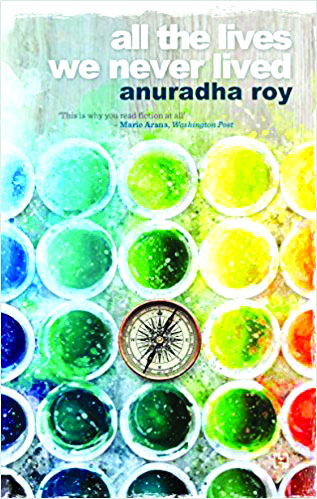All the lives We Never lived
Author : Anuradha Roy
Publisher : Hachette, Rs 599
Anuradha Roy coerces the artist out of the individual, reminding her readers that they must not give up on art, says SHWETA DUSEJA
In her novel All the lives We Never lived, Anuradha Roy paints a world which tries to cage artistic inclinations and dreams. But, it also presents the picture of an alternate universe which liberates the artist to be oneself. It focuses mainly on the life of a girl who painted beautifully before marriage. After marriage, she finds herself trapped within the domestic moorings. The novel presents several other artist figures who face many difficulties to stick to their art. The novel shows a world divided into two: one which appreciates art and motivates the artist; the other which confines the artist and ridicules his art as useless.
The title of All the lives We Never lived hints at the lives that were carved for them by their families or the society and the lives they free themselves from to sculpt their dreams. The novel is about those life-changing choices that make a great difference in the way the characters live and perceive the world. The author shows her awareness of the difficulty of these choices and clearly charts out the sacrifices one has to make for such strong decisions. However, the novel never doubts these choices. Not for an instance does it ponder upon whether or not the choices that were made were right or wrong. These were the best choices the characters could have made for themselves even if they had to make many sacrifices for them.
Most part of the novel is set in a small town named, Muntazir where the story of our protagonist begins and later in Bali which is her artistic haven. It covers a period from the early 1920s to the late 1940s. It weaves within its fabric the domestic chaos of an artist’s daily life and suffering within the larger context of the chaotic world war. Roy stitches together history and fiction to give colour to her characters and their lives. Rabindranath Tagore’s journey to Bali and his meeting with the German painter and artist, Walter Spies are described at length. The overlap with fiction is shown on the ship to Bali where the fictional character, Gayatri, who is the protagonist of the novel, meets Tagore and takes her inspiration from different people she meets on her journey. later, the novel reflects upon the chaos and violence caused at home and abroad when the British drags several Indians into the war leading to hundreds of casualties. This intersection of the real and the fictional is what makes the novel all the more appealing and engaging for the readers.
The novel is narrated by an old man, Myshkin, who is around sixty years old. He leads a secluded life with no family to call his own. He is immersed in his love for nature that he inherits from his mother. He is Gayatri’s son who has not been able to forgive herself for leaving him when he was just a nine-year-old boy. He revisits his life with his mother. The memory of not finding his mother at home on a monsoon day when she had promised to take him to a secret place, haunts the narrator and that is where he begins the narration of the story. There are glimpses of anger, frustration, pain and loss in his narration. There are constant shifts in mood. Predominantly, it is that of anger and loss. But, more than anything, it is lack of understanding the mother’s choices. Roy shows a transition in Myshkin’s feelings towards his mother, Gayatri, through the course of the novel. The journey motif is central to the narrative. It is not just a physical journey of Gayatri to a world which she chose to live in, away from all the trappings of domestic life. It is also a figurative journey for Myshkin to understand and forgive his mother. Roy has used the journey motif fantastically well.
The novel focuses on the various means of coercing the artist out of the individual. Gayatri who has been depicted as an innate artist finds herself in these trappings more so after she gets married. But even before marriage, she needed the support of the family to give wings to her imagination. When that support is missing, the artist begins to lead a stifled existence. And for an artist, this is no existence at all. Gayatri, after her father’s (who was her greatest support) death and her marriage, finds herself trapped because she is forced to prioritise family over art. Art which was a way of expression for her was forced into a hobby. Until the arrival of another support system in her life, she couldn’t make those difficult choices. There are several other characters in the novel who are not treated with much respect because of their love for art. Their art is labelled as worthless in a utilitarian world. The novel then is a sharp critique of such a worldview which stifles its art and artists. It makes the readers go through several emotions as they proceed reading the story. It makes them introspect about their own lives and that is what makes the novel and its characters quite relatable. It definitely deserves a place in your bookshelves, not to read once and gather dust, but to pick it up again once in a while and revisit the stories of these artists.


























